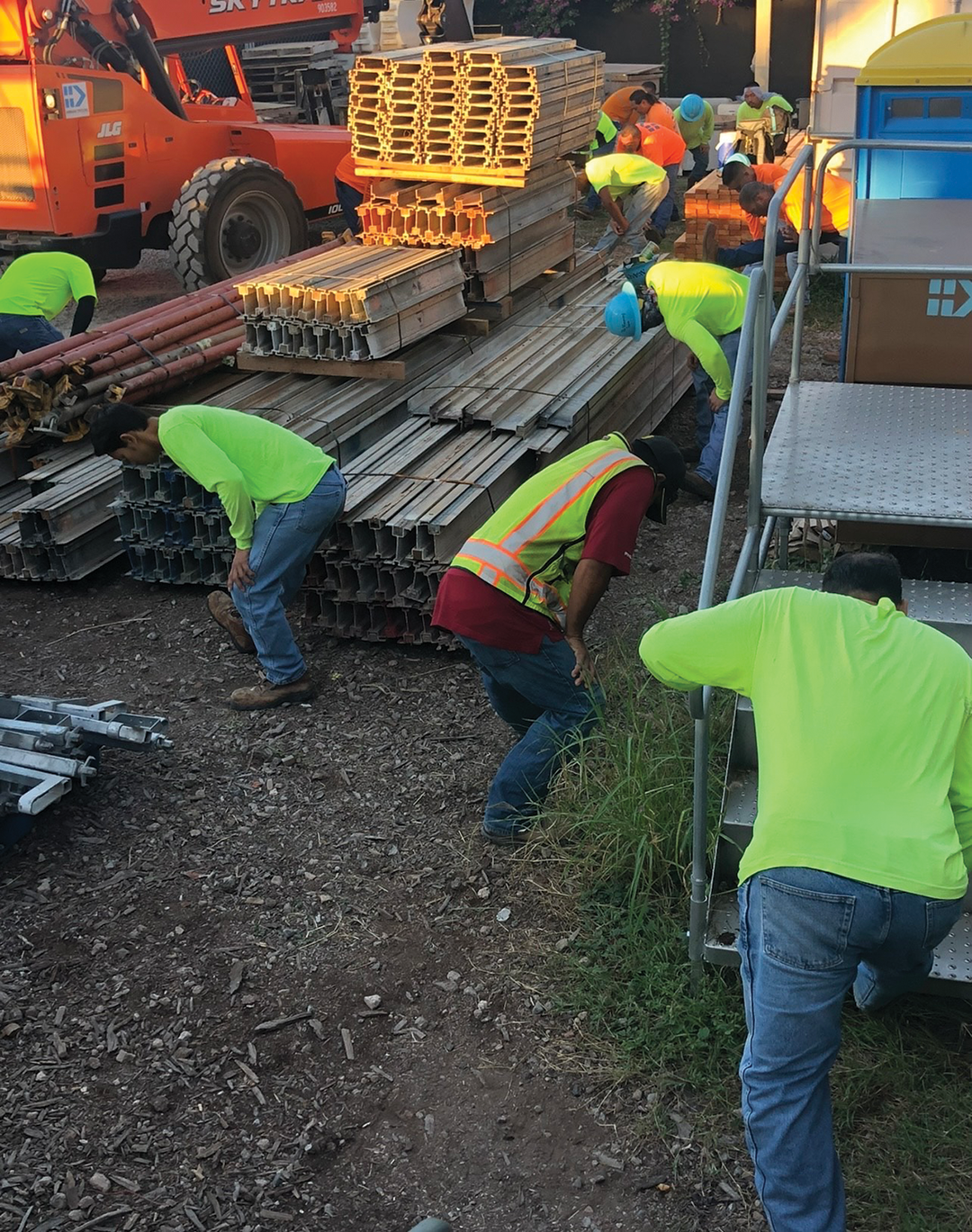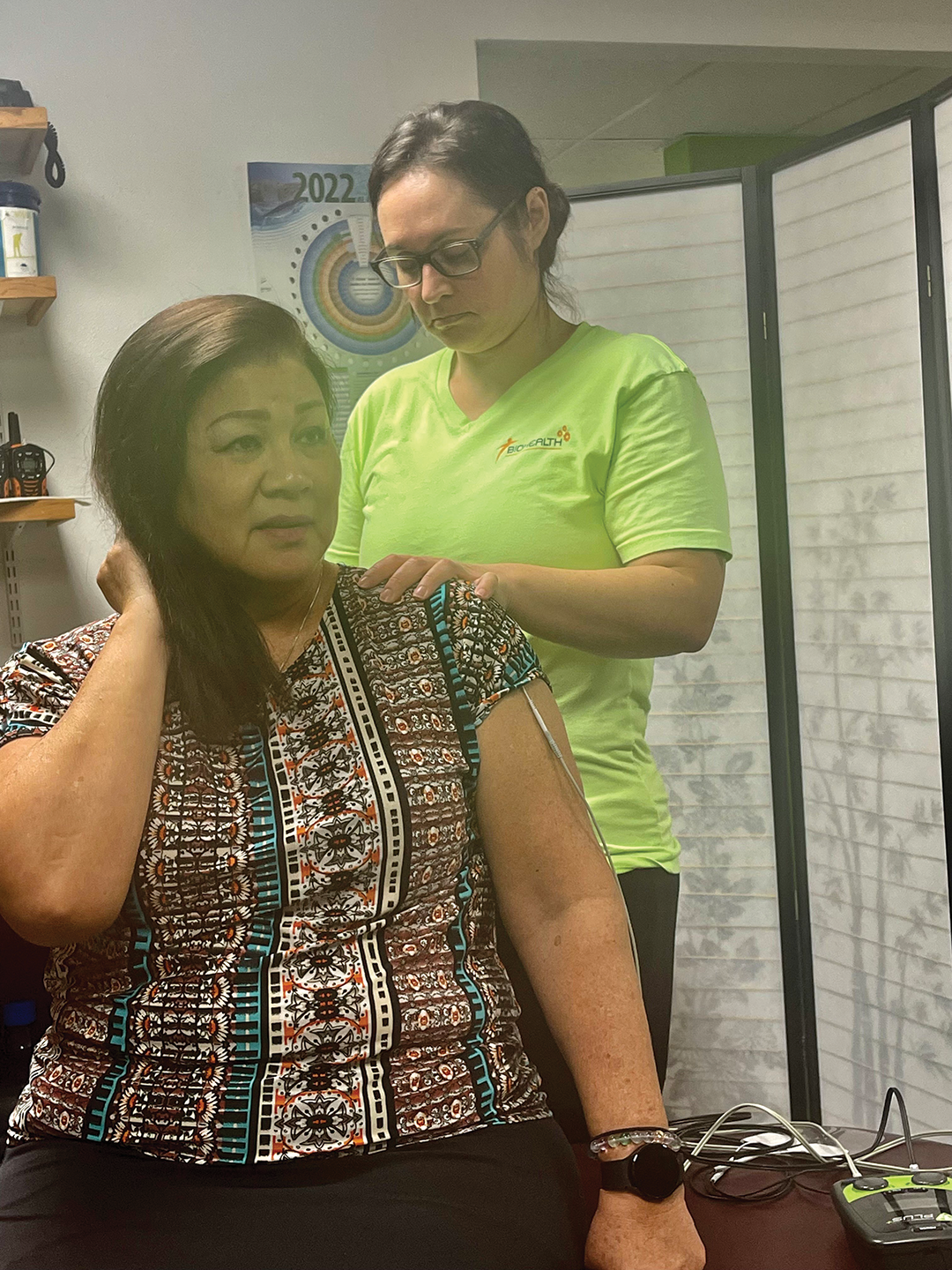
As you know, your workers are the key to your company’s success, and the last thing you want is workers out because they are injured. With 28 years of experience in occupational biomechanics, I understand the importance of injury prevention. Finding solutions to discomforts and implementing unique, proven solutions to reduce injuries in the workplace are components of what is known as biohealth care.
Biohealth care helps minimize financial and human costs associated with workplace musculoskeletal disorders. It is designed to intervene and find solutions to employee discomforts before seeking treatment from a medical clinic, thereby reducing Occupational Safety and Health Administration recordable accidents and workers’ compensation claims and costs.
To help keep your employees safe and injury free while improving productivity, consider adding biohealth care to your company’s health care benefits.

What is biohealth care?
According to the College of Science at Oregon State University, Corvallis, biohealth science is a new name for one of the oldest disciplines that encompasses biology. Biohealth scientists accelerate discovery and advance understanding of human health. Biohealth care focuses on finding effective solutions for physical discomforts and educates employees regarding injury prevention, such as preparing for overextension when doing certain tasks.
A successful biohealth care program reduces workers’ compensation claims, focuses on tips and advice for preventive measures, and helps build healthier, more prepared employees. Importantly, it provides individual preparation and stretching programs for workers. By applying a specific, individualized and proactive approach to injury prevention, employees recognize it’s about them and for them, and when applied, it makes their lives better.
Roofing workers’ needs
In the roofing industry, physical labor occurs every day, comes in numerous forms and can leave employees exhausted, tired and possibly sore. Too much physical labor can leave employees irritable and overwhelmed.
Days, weeks and sometimes months of repetitive movements create stress and strain. Degenerative joint disease is consistent with cumulative joint usage. Carrying 80 pounds of bundled shingles on a steep-slope roof when not in an optimal ergonomic position feels a lot more than 80 pounds on ankles, Achilles tendons and calves. Picking up shingles all day affects the No. 1 area of concern—the back.
Pushing to remove roofing materials from a roof with tools such as pry bars, axes, shovels, spades and hydraulic hammers also can cause strain on the back. A strong biohealth care program creates individualized solutions for back discomforts and addresses them before they turn into injuries.
Following is an example of a four-phase customized biohealth care plan:
- Phase one focuses on a proactive approach to finding vulnerabilities for strains and sprains and then implements solutions to prevent injuries.
- Phase two is an active approach that prepares joint and muscle groups for simple repetitive motions and overextension performed daily.
- Phase three is a reactive approach to recognize types of discomforts and educate employees to avoid additional aches in specific bodily regions.
- Phase four is rehabilitation where analysis information is used to interpret the type of care needed to rehabilitate and restore stability back to a muscle and/or joint region.
A biohealth care program should sort out high-, medium- and low-risk injuries. The idea is to assess employees to find those who need more specifically designed programs. Much like the sports industry, the roofing industry has unique specifications for body preparations such as lower back, wrist, ankle and knee discomfort.
A case study
During the summer of 2020, NRCA member Commercial Roofing & Waterproofing Hawaii Inc., Waipahu, partnered with my company, Bio Health Care LLC, Kapolei, Hawaii, to challenge internal processes that may be affecting productivity.
Through a customized program that includes four visits per month, Commercial Roofing & Waterproofing Hawaii employees receive effective solutions to take care of nagging discomforts and address preventive care to reduce work injuries. Labor-intensive work sometimes surpasses a person’s physical capabilities. Preventive care helps avoid a long-term imbalance between physical demands in the workplace and an individual’s physical capability.

For workers with specific needs, insoles, braces and orthopedic supports to comfort their feet, knees, ankles and wrists were recommended to help employees reach and maintain a healthier position. We started with about 40 employees and did full-range of motion and flexibility testing. We conducted a number of orthopedic and strengthening tests to gauge early symptoms of discomforts. We then started a program that included testing once per week.
"I have seen a marked improvement with reduced injuries, and I attribute it directly to biohealth care,” says Steve Kalani, safety director for Commercial Roofing & Waterproofing Hawaii. “There is a good level of trust among management, field crews and the biohealth care team.”
An example of intervention was an employee complaining of acute (quick onset) low-back pain after bending over to pick up shingles. We concluded the employee had a low-back sprain as a result of bending in an uncomfortable position. His range of motion in the torso was 20% and extension abilities was 15%. With the employee's consent, we applied our first-aid care application, including percussion and e-stem tools that reduce swelling and improve blood flow to at-risk joints and muscles. We recommended light-duty work and re-evaluation the next day.
After re-evaluation, the employee’s range of motion increased by 40% and extension abilities increased by 20%. Although the employee was doing much better, we recommended he continue light-duty work and be re-evaluated in three days. Following re-evaluation, the employee’s flexibility and extension abilities were within normal range and his discomfort level was down to a one or two (little to no discomfort) from a previous eight (great discomfort).
Several other employees became interested in participating in the program because of our success.
"If you improve your employees’ health, they work smarter and more productively,” says Guy Akasaki, CEO of Commercial Roofing & Waterproofing Hawaii. “They go home still able to give attention to their families. They feel glad to come to work knowing our company takes care of them.”
Cost
An individualized Bio Health Care program for a small-sized company of 50 or fewer employees starts at around $48,000 annually. This may sound too expensive, especially if you have a smaller company that does not have a large number of employees. However, a single back injury processed through workers’ compensation insurance can cost a company an average of $58,000.
A biohealth care program helps with joint-related discomforts before they become a problem. It is a proactive approach that helps your company and employees prevent accidents, OSHA recordables and other costs (tangible and intangible) that hurt a company's bottom line.
“When I first saw the program, I embraced the concept, but I had a hard time embracing the cost because it’s all on the front end,” Akasaki says. “But the back end is where you start to see the savings. You can see it in productivity, employee welfare and employee demeanor. Many of our crew members say they feel like Superman after a visit and want to push their bodies.”
Care for your crews
Day in and day out, your roofing workers’ bodies absorb continual wear and tear on bones, joints and muscles caused by overextension. No job is so important and no service is so urgent that we cannot take time to care for our crews. It’s time to implement a biohealth care program at your company. When you do, you will improve employee morale and productivity while reducing potential for expected injuries.
STEPHEN GRENNAN, D.C., D.O., is CEO of Bio Health Care LLC, Kapolei, Hawaii.
For an article related to this topic, see “Watch your back!” June 2013 issue.



